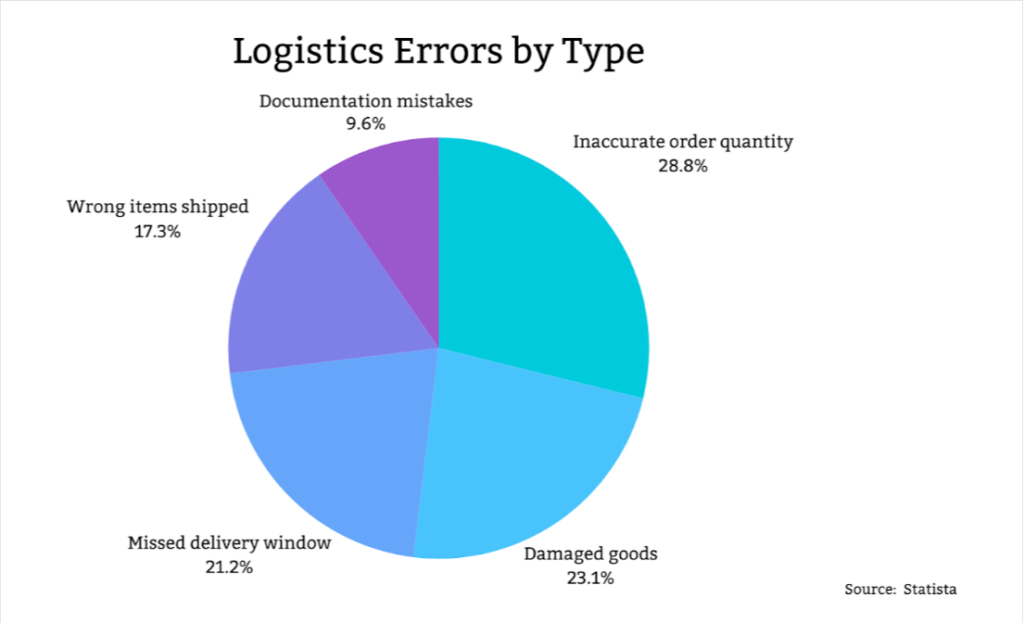
Logistics scheduling is crucial for modern businesses. They strive to meet ever-increasing customer demands and avoid costly errors. But, balancing speed and accuracy can be a significant challenge. This article explores practical strategies to strike that delicate balance.
The Growing Need for Speed in Logistics
Online shopping is growing. As a result, customer expectations for faster deliveries have skyrocketed in recent years. Now, 75% demand delivery within five days or less. Meeting these demands can give companies a significant competitive edge. They can increase market share by up to 20%. However, 61% of shoppers will abandon their purchases if their speed expectations are not met.
Meeting Evolving Consumer Expectations
In 2023 and beyond, even faster deliveries will become the norm. 53% of customers consider 3 days or less to be “fast shipping,” a dramatic decline versus 33% in 2018. Today’s consumers prioritize swift deliveries. Logistics velocity is crucial for customer satisfaction and retention.
Millennials are 75% more likely to be loyal customers if 2-day shipping is guaranteed. Fifty-five percent of online shoppers deem same-day delivery availability as crucial when selecting retailers.
Why Accuracy Still Matters in Logistics
While customers focus on speedy logistics, accuracy remains imperative for companies themselves. Even minor logistics errors can spiral into large costs and reputational damage. Utilizing logistics scheduler software can help prevent errors and keep logistics operations running smoothly.
Reducing Operational Costs
Small fulfillment inaccuracies, such as shipping the wrong item or quantity, can lead to large financial losses. Logistics mistakes can cost up to 1% of total revenue. Improving order forecasting accuracy could reduce inventory costs by 10-20%.
For example, a single order inaccuracy averages $50. This can accumulate to over $2 million for mid-sized companies. Improved precision in picking, checking, and packing eliminates these profit leaks.

Managing Brand Reputation
Apart from costs, customers will abandon brands facing logistics issues. 47% declare they’d halt purchases after one late delivery. This highlights the importance of accuracy for retention. These delivery blunders spark negative social media reviews and reputational damage. They also create a 7% earnings dip.
For example, customers report order errors from retailers on complaint sites. Accurate shipments also enhance the brand’s image through positive feedback. Addressing precision early prevents public criticism later.
Achieving the Optimal Balance Between Speed and Accuracy
Success in logistics requires both speed and accuracy. Balancing these factors is crucial. Modern technologies, data use, and continuous improvement enable this equilibrium.
Analyzing Performance Data
Data is another powerful asset. It helps companies enhance turnaround times and avoid mistakes. Leaders assess fulfillment metrics like order cycle times, accuracy percentages, and inventory velocity. They spot bottlenecks undermining speed or reliability. Addressing these through updated logistics workflows prevents recurring issues.
Ongoing data gathering enables accurate demand forecasting. It reduces overstock and hampers rapid order processing. Dashboards with key indicators help cross-functional teams balance priorities. They stay focused on both metrics.
Committing to Continuous Improvement
With consumer expectations evolving, logistics systems must keep pace through continual enhancement. Businesses can respond to new customer priorities or market shifts. They do this by re-evaluating processes, technology, and skills. This supports speed and accuracy.
For instance, expanded same-day delivery demand might need adding extra carriers or urban warehouses. Continual improvement maintains the optimal balance despite volatility. Those who don’t measure themselves against benchmarks for precision and velocity will fall behind rivals.
Best Practices for Achieving Balance
The companies can improve their speed and accuracy by using proven strategies.
Prioritizing Critical Performance Factors
Concentrate measurement and improvement initiatives around execution variables with the largest business impact. Examples include delivery ETAs, exact order fulfillment, and stockout reductions. Base targets on market intelligence and update.
Promoting Cross-Departmental Collaboration
Break down silos between logistics, technology, and operations teams. This will enable holistic data analysis and unified solutions. Develop joint plans of action and accountability for accuracy KPIs. Include pick errors amid faster processing mandates. This instills shared ownership.
Investing in Employee Skills and Technologies
Commit resources to supply chain technology upgrades. These upgrades include warehouse management systems, staff training programs, and change management. These upgrades will provide lasting capabilities for speed and precision. Especially focus management’s attention on aligning teams to balance delivery speed and accuracy. Employ incentives and maintain consistent vision communications.
Why Companies Struggle to Find the Right Balance
Balancing speed and accuracy is important. But, many organizations struggle to achieve this goal. Challenges include:
Information Gaps from Outdated Systems
Legacy logistics systems lack real-time inventory transparency. This undercuts both quick turn capability and error prevention awareness. Difficulty tracking fulfillment flow makes proactivity around precision and acceleration challenging.
Entrenched Company Silos
Ingrained siloed mindsets between internal groups create disjointed, optimized supply chain processes. This is instead of synchronized approaches to refine velocity and quality in parallel. The lack of collaborative communication channels further isolates insights on improving interdependent metrics.
Insufficient Investment in Capabilities
We do not make enough investment in cultivating supply chain technology. Also, there is insufficient investment in staff skills and leadership best practices. This hampers the progress of speed and accuracy, emerging out of reach. Viewing logistics as a cost center restricts vital competency development. This action prevents others from viewing it as a value driver.
Overcoming these challenges demands sustained effort over months and years. The recommendations provided above can chart the path to balancing excellence.
The Bottom Line
Today’s business environment demands both rapid order fulfillment velocity and near-perfect precision. In conclusion, the current business environment necessitates this. Companies can meet these logistics requirements by leveraging the latest innovations and data. Continual reassessment and cross-functional alignment are also important.
Brands can foster loyalty, reduce costs, and distinguish themselves from rivals in crowded marketplaces. They can do this by emulating industry leaders. They balance speed and accuracy. Customer expectations are rising. Committing to this balance represents the new imperative for supply chain success.
FAQs
How can I determine the right balance for my specific logistics needs?
Conduct thorough data analysis of current speed and accuracy levels across your customer base. Identify pain points through customer sentiment analysis. Set targets aligned to your business strategy and industry benchmarks. Track capability gaps inhibiting progress.
Which technologies can most effectively enhance speed and accuracy?
Route optimization, IoT sensors, machine learning, and blockchain solutions offer strong ROI. Additionally, leverage cloud-based analytics and centralized WMS platforms to coordinate efforts. Start with affordable SaaS visibility tools before adding advanced automation if budgets allow.
How can I unite siloed logistics, operations, and technology teams? I want them to focus on accuracy alongside speed initiatives.
Institute cross-departmental KPIs for joint metrics. These metrics include lead time variances and quality defects from mispicked orders. Shared accountability and incentives drive collaboration. Also, appoint process excellence task forces around priority areas. For instance, reducing stockouts. Use integrated causal analysis and solution planning.



